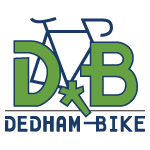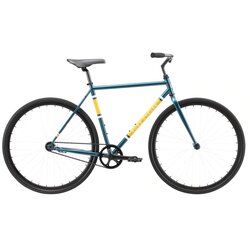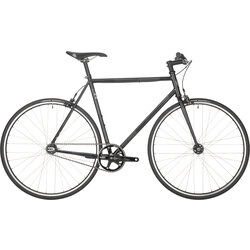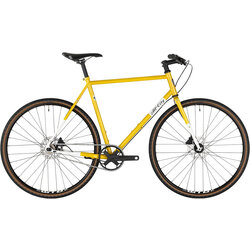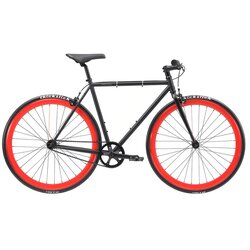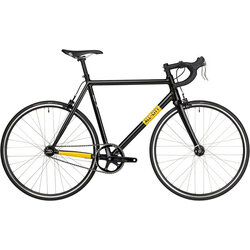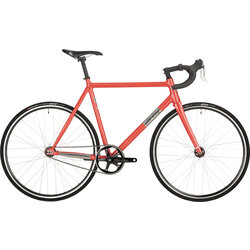Fixed Gear Bike Buyer's Guide
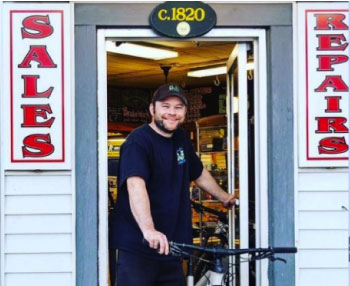
By: Matt Donovan,
3rd generation Owner and General Manager of Dedham Bike
Last updated: 8/7/23
What is a fixie / fixed gear bike?
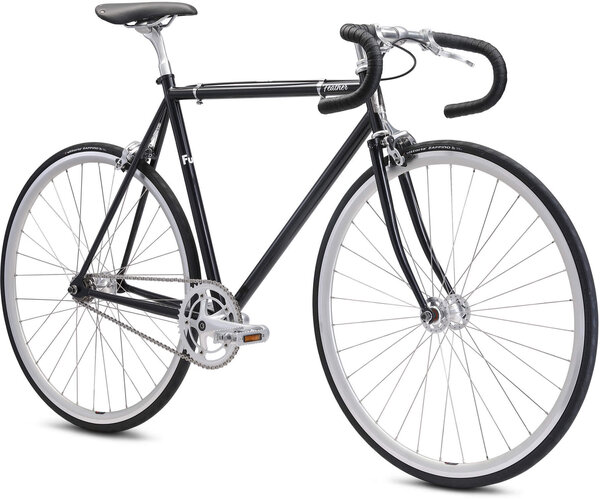
“Fixie" is short for “fixed gear,” which is a slang term for bicycles that have drivetrains with one gear that's fixed to the rear wheel so that you cannot coast and must continue pedaling whenever the bike's moving. Fixies are among the most simple of bicycles because they don't require derailleurs, shifters, double- or triple-chainring cranksets, or, in some circumstances, even brakes.
Pros and cons of fixie bikes
Pros
- They're simple: the fixie is the simplest form of the bicycle. As long as you're keeping your tires pumped up, very little can go wrong.
- They're often very affordable: because they don't have a lot of extra components, fixies are usually pretty cheap in comparison with geared models.
- They're light: no excess parts means no excess weight.
- They're durable: there's very little maintenance to be done so they're great winter commuters and wallet savers.
- They're powerful: the direct drive means you're putting all your energy into turning the wheel, which provides better power transfer than geared bikes.
- They're stylish: no way else to say it, fixies are pretty darn cool.
Cons
- They're not great for hilly terrain: climbing is tougher on a fixie because you can't shift into an easier gear. And once you start going down, you can't coast because there is no freewheel in the back, which can make for some awkward descending.
- They're more challenging to ride: Riding a fixed gear bike takes a little more focus, and if you forget to keep moving your legs or lean over too far in a corner, you're in for an unpleasant surprise!
- They (sometimes) give you less control: fixies that don't have brakes rely on your legs to put backward pressure on the pedals to slow down, meaning sudden stops are harder to pull off.
What are fixed gear bikes good for?
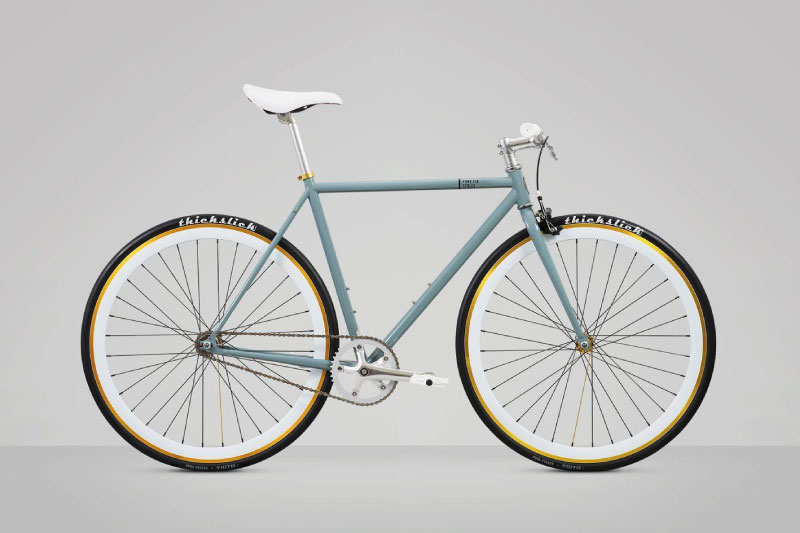
Commuting
Fixies are most commonly ridden in urban areas. These fixed gear road bikes are for quickly navigating city streets, and you'll see cycling enthusiasts and professional bike messengers both using fixie bikes as their primary means of transportation.
Racing
Another popular style of fixed gear riding is the racing scene. Track bikes are specifically designed for maximum speed in the velodrome and on road race courses, although you'll sometimes see people riding these around town as well.
Track bikes vs fixed gear road bikes
Track bike fixed gears are great for racing or just riding. Many people think of fixed-gear bikes and track bikes as the same, but they aren't. Track bicycles (image, left) are designed for use on velodromes (indoor and outdoor oval bicycle tracks designed for racing). They do not have brakes because they aren't necessary due to the uniform direction of travel, lack of corners and the fact that no one can stop any faster than you can.
In fact, most velodromes forbid the use of brakes for safety. Because velodrome surfaces are usually super smooth and uniform and because the racing events are usually fast and demanding, track bicycles boast frames that are built quite stiff for maximum efficiency. Plus, to promote better high-speed handling, the track bike's frame geometry is tighter and more race-oriented.
While some fixie fanatics prefer to ride track bikes on the street, especially those who are or were into track racing, it's generally not the best option for real-world fixed-gear riding due to the unforgiving stiff ride and lightning-quick handling, which respectively, beats you up a bit and forces you to pay close attention when riding. A better choice for most riders are fixies designed for the street, such as the ones we sell (keep in mind that we can easily convert any fixie to allow coasting should you prefer that option).
It's also possible to build your own fixie starting with a bike with standard road geometry and clearance for wide tires and even fenders. These rigs are available complete and can be built from older road bikes, too. We carry a full assortment of components and accessories and can help you with advice and the right parts should you want to take this approach.
Why ride a fixie bike?
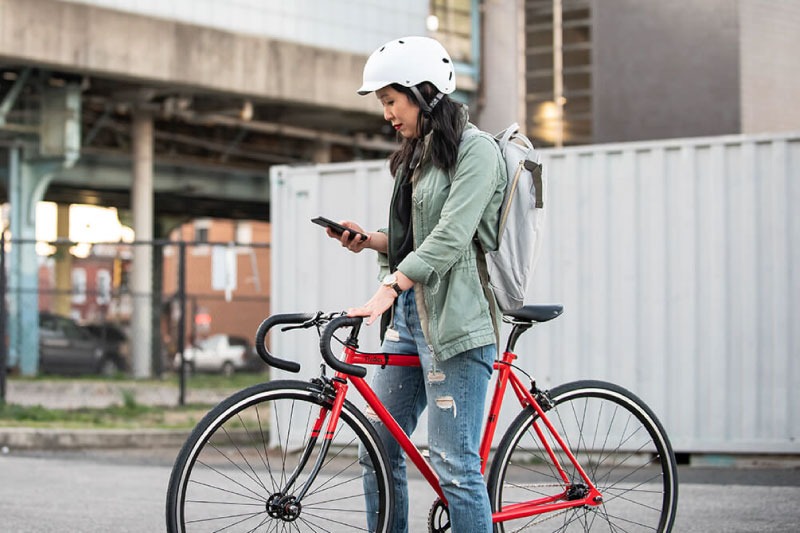
Fixies are fun!
Due to their uniqueness (riders often paint and decorate their fixies and add unusual components and accessories) and elegant simplicity both in appearance and operation (fixies require significantly less maintenance, too), the fixed-gear phenomenon has become a thriving and fascinating fringe element of cycling.
Fixed gear riders have style!
You've probably seen fixie riders darting about town in traffic because they look so different than standard roadies or mountain bikers. And, maybe you've wondered why these unusual bikes are so popular and how it is that people can bike around with only one gear, and one that doesn't allow coasting, either. To answer these questions and to help you join the fixie fun, here are some insights into these wonderful machines. Keep in mind that we're always happy to show you our selection of fixed-gear bicycles, discuss options and help you with all your fixie projects. We have the experts, bicycles and accessories you need! Infuse your own style!
That smooth fixie feeling
Fixies offer simplicity that harkens back to the earliest days of cycling when one gear was common. Because your feet are directly connected to the rear wheel, which drives the pedals around, your pedal stroke becomes nearly perfect and with no dead spot in the stroke, you are more efficient. Also, you learn to spin more efficiently because you have to pedal constantly and you must pedal faster on every downhill. No mental energy is wasted fiddling with shifting mechanisms, either.
Ultimately, the connection between the rider and the machine is almost perfect
Some riders are so skilled they can balance in place and slow and stop even without brakes. What's more, because fixed-gear bicycles, and those who ride them, tend to be quirky and unique, this trendy type of cycling has taken on a fun countercultural aspect. But remember, anyone can have fun on a fixie. You don't have to be a tattooed bike messenger to enjoy and appreciate the ride (though, if you are, you're in good company)!
How do you ride a fixie bike?
How do you start riding a fixie?
Hop over the top tube and straddle the bike. Have one pedal pointing up or forward and put your foot on that pedal. Put weight down on that pedal and simultaneously lift your other foot off the ground and place it on the other pedal so that as you build momentum and the cranks start turning you're on the seat and balanced.
Can you stop pedaling on a fixed gear bike?
You can't stop pedaling on a fixed gear bike, unless you are purposefully trying to lock up the back wheel and skid. Because the drivetrain is directly connected to the wheel, if your bike is moving, your legs are spinning.
How do you ride a fixie downhill?
Very carefully. This is where having brakes becomes crucial to enjoying your ride. As you start to build up momentum, gently apply the brakes to keep your speed at a level where your legs aren't spinning around out of control. You can also apply backward pressure to the pedals to help slow your momentum. Riding a fixie in the hills is more about control than going fast.
How do you stop on a fixie bike?
Use your brakes! And/or apply backward pressure to the pedals to stop them from turning so quickly.
Fixed gear setup: brakes, gear ratios, chains, & more
Brakes or no brakes?
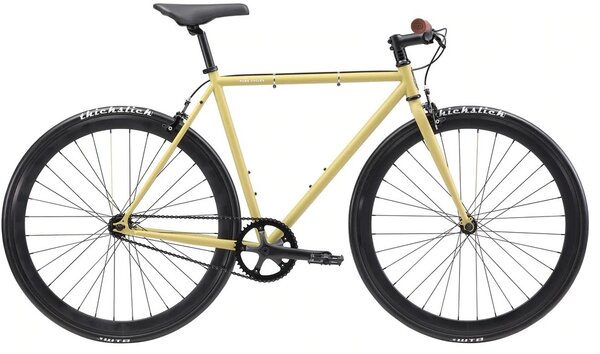
Lots of fixed gear bikes are sold with either front and rear brakes or just a front brake. While it is possible to ride a fixie with no brakes, but we don't recommend it if you're going to be riding on the roads.
It's true that you can slow the bike down by backpedaling and skidding, but you have to be an incredibly skilled rider to control a brakeless fixie in traffic. Plus, when you know you can brake efficiently you're more comfortable riding faster, and faster is fun! Otherwise, get ready to start decelerating well in advance of every red light.
Fixed gear ratio
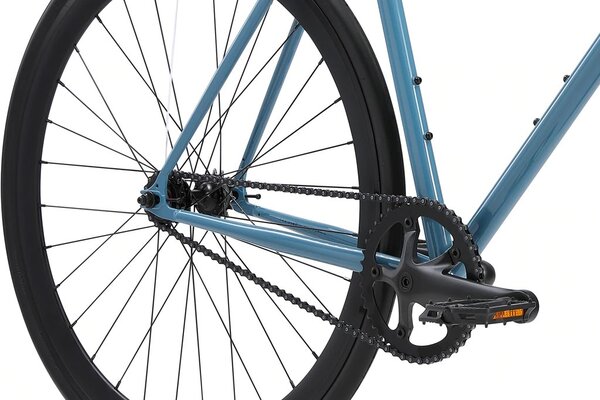
Since there's only one gear on a fixie, choosing the best one is important. You'll need to weigh how you like to pedal (how fast you pedal), where you enjoy riding (the hills or flats, or both), and have a feeling for how fit you are (stronger riders can handle higher gears and vice versa). Some people like to "spin" meaning they'd rather have an easier gear and spin their legs faster, while some people prefer to "mash" meaning push down on a harder gear.
If you're not sure where to start, a good in between ratio is 46:16, meaning a 46 tooth crank and a 16 tooth rear cog. Lots of fixies are sold with that ratio and it's a good place to dive in. To understand the gear ratio, divide the number of teeth in the crank by the number of teeth in the cog. For this example that's 46 / 16 = 2.875. This essentially means that for each complete rotation of the pedals, the rear wheel will spin 2.875 times. A gear ratio that results in a number higher than 2.875 will be harder to pedal, and a lower number will be easier.
One tip is that with a fixie you can get away with a slightly higher gear than you’re used to, thanks to the added efficiency and momentum of the rear wheel and fixed gear that keep the pedals turning around. Another way to determine which gear to use is to select one that is easy enough to get you up the hills you need to climb yet one not so easy that you lose control on the way down.
When you buy a new fixie we can help you choose the perfect gear. And, you'll have the opportunity to ride the bike and feel if it's right for your fitness, terrain and needs.
Fixed gear hubs
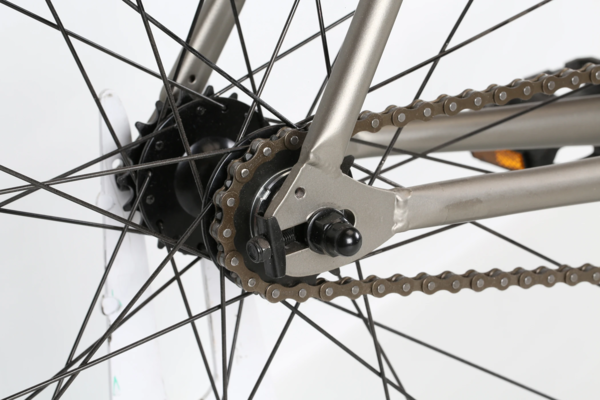
You cab get a flip flop hub which allows fixed on one side and freewheel on the other! One of the most important parts of any fixie is the rear hub. It's a bit of a special animal that incorporates two opposing sets of threads on the right side, one for the fixed cog and one for the lockring. The lockring threads on in the opposite direction, flush against the cog so that backpedaling forces don’t cause the cog to come off.
Some hubs have two sets of these opposing threads or standard freewheel threads on the left side so that you can install a different-size cog on the other side, or a one-speed freewheel to that side. This allows flipping the wheel around in the frame to change the gear or allow the bike to coast. This is called a "flip-flop" hub.
An interesting detail of fixie rear hubs is that they usually feature threaded axles and high-quality threaded axle nuts rather than the quick releases you see on standard road and mountain bikes. This is because most fixies feature on the frame, which make chain tensioning possible, but also don't lock the rear wheel in one position. The threaded axle and nuts are necessary to prevent the wheel from changing positions under the additional torque on the rear wheel and drivetrain of fixed-gear riding.
Fixed gear chains
Do I need a special chain? There are two common bicycle chain types, referred to by their widths, which are 1/8 inch and 3/32 inch. Most track fixies use the wider, heavier 1/8-inch chain (also used by BMX bicycles and old-fashioned roadsters). However, 3/32-inch chains and chainrings are much more common, because they're the same type used on 8-, 9-, and 10-speed road and mountain bikes. So, these are more frequently used on fixies.
Plus, if you're building a fixie out of an old 10-speed, using a 3/32-inch chain means being able to use the crankset it came with originally. Another benefit is that these chains are usually more flexible than 1/8-inch models, which translates to smoother and quieter pedaling. They're lighter, too.
Fixie frames
What frame to use? You can convert any frame to fixed-gear use providing that it has horizontal dropouts because these are essential for tensioning the chain. These adjustable dropouts were common on steel road bicycles built around 10 to 20 years ago and more.
And, as a bonus, these stalwart steeds of yore were typically hand brazed of great-riding quality steel tubing and used attractive lugs to join the tubes. If you can find a fine second-hand road frame or bicycle like this, it's a great place to start your fixie project. You might want to double check that old 10-speed in the garage (or your neighbor's shed) — chances are, it'll work great!
Not sure if your bike has fixie friendly dropouts? Contact Us
Fixie cranks
On these older 10-speeds, the original crankset will work fine, though you may need to change the small chainring if it's not a 42-tooth model (which results in a reasonably easy all-around gear). If you have several cranksets to choose from, pick one with slightly shorter crankarms than you normally use (the length is usually printed on the back, or measure from the center of the pedal hole to the center of the crank-bolt hole). Shorter crankarms make higher cadences easier to handle on fast downhills.
Fixie pedals
Most fixed gear riders prefer flat pedals, although there are some who clip in. Some riders use toe straps to help them stay connected to the bike and maintain better control. We recommend flats as the best way to get started.
Customize your fixie bike
One of the best things about fixies is that you can add custom touches to make yours unique. We're talking about more than the requisite personalized sticker, bell or cards in the spokes; that's just the beginning. How about flat bars, motorcycle grips, disc wheels and deep-dish color-matched rims and hubs? Or, maybe you'd like to install vintage bicycle parts that you've always wanted, such as cottered cranks, leather saddles and ornate quill stems. Let your imagination take your fixie project where no bike has gone before! And, don't forget the home-brew paint job to make your fixie unmistakably yours.
